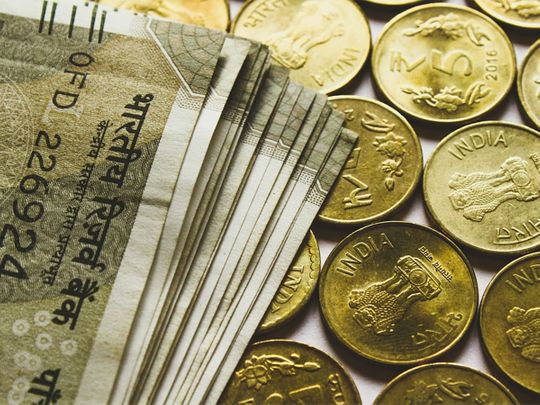
Dubai: The Indian rupee took a dip on Tuesday morning touching as low as 19.36 against the UAE dirham.
What is more, finance experts in the UAE say the trend is likely to continue until such time India’s GDP crosses seven per cent.
In August, the rupee took a plunge dipping as low as 19.21 against the UAE dirham what with the Indian stock market crashing. A slowing economy and rising inflation were two factors for the rupee fall, which continue to persist.
More reasons to cry over falling rupee
But this time, there are more reasons to cry over the falling rupee value.
According to TK Raman, group financial officer, Finance House PJSC, a new wave that has hit India and which is pulling it down the growth ladder is the real estate sector. Said to be in the advanced stages of a bubble burst, to say the sector has tapped would be pretty much an understatement.
Raman said: “The new fear now is the real estate sector in India. Lots of developers have borrowed from banks and shadow banks. They (especially those developers who have an exposure to banks) are facing a massive cash crunch. A new set of bad loans is building up with Indian banks. This is on top of the economic slowdown.”
Bad debts from realty developers rising
“Bad debts from developers are mounting. The bubble has burst and this is effecting the profitability of the bank. The health of the banking sector in India is questionable. I read a report that the estimate value of the banking sector exposure to projects under construction is more than 60 billion dollars. So you can imagine the risk,” said Raman.
RBI repo rate cut
Then you have the Reserve Bank of India (RBI) which on October 4 announced yet another cut in repo rate. For the fifth consecutive time this calendar year, the central bank cut the repo rate by 25 bps and the reverse repo by 25 bps (100 bps = 1 per cent).
How does this effect the rupee value
For starters, the income from Fixed deposits is likely to fall. So one is earning less as a result. For the foreign investor, a decline in the rupee exchange rate is not encouraging. “If the interest rates go south, the foreign investor will likely pull out investments. This will slow the economy further, increase inflation and decrease the value of the rupee further.”
Raman said he will not be surprised if the rupee touches as low as 20 against the UAE dirham. “No recovery of the rupee in the short term until the GDP of the economy improves and crosses seven per cent.”
Short-term benefit for NRIs in UAE
If you have a big loan, urgent expenses to be met in India, now is the time to send it. For fewer dirhams, you can remit more Indian rupees back home. What is more if you have a plan to build a house with a small budget that does not require a lot of loan money, take a personal loan from the UAE and build your house paying cash. Interest rates on personal loans from UAE are far more reasonable than in India and so it can be worthwhile considering this option.
Raman said: “One has to weigh this option after considering the employment position of the person. Remember, if someone takes a personal loan from the UAE and is not able to service it, they will be in bigger trouble.”
“Back home, there is more stability and other sources of income to depend on. I would not necessarily advise somebody to do that. However, the weakness in the rupee may compensate for the additional interest burden. According to me, that is five to six per cent. With rupee being weaker by three to four per cent, one may get compensated anyway.”
Raman said: For expats whose families depend on their income from the UAE will be able to send home more money. It will be as if their monthly salaries have risen,” he said.
“Keep an eye out for trends,” he advised.








